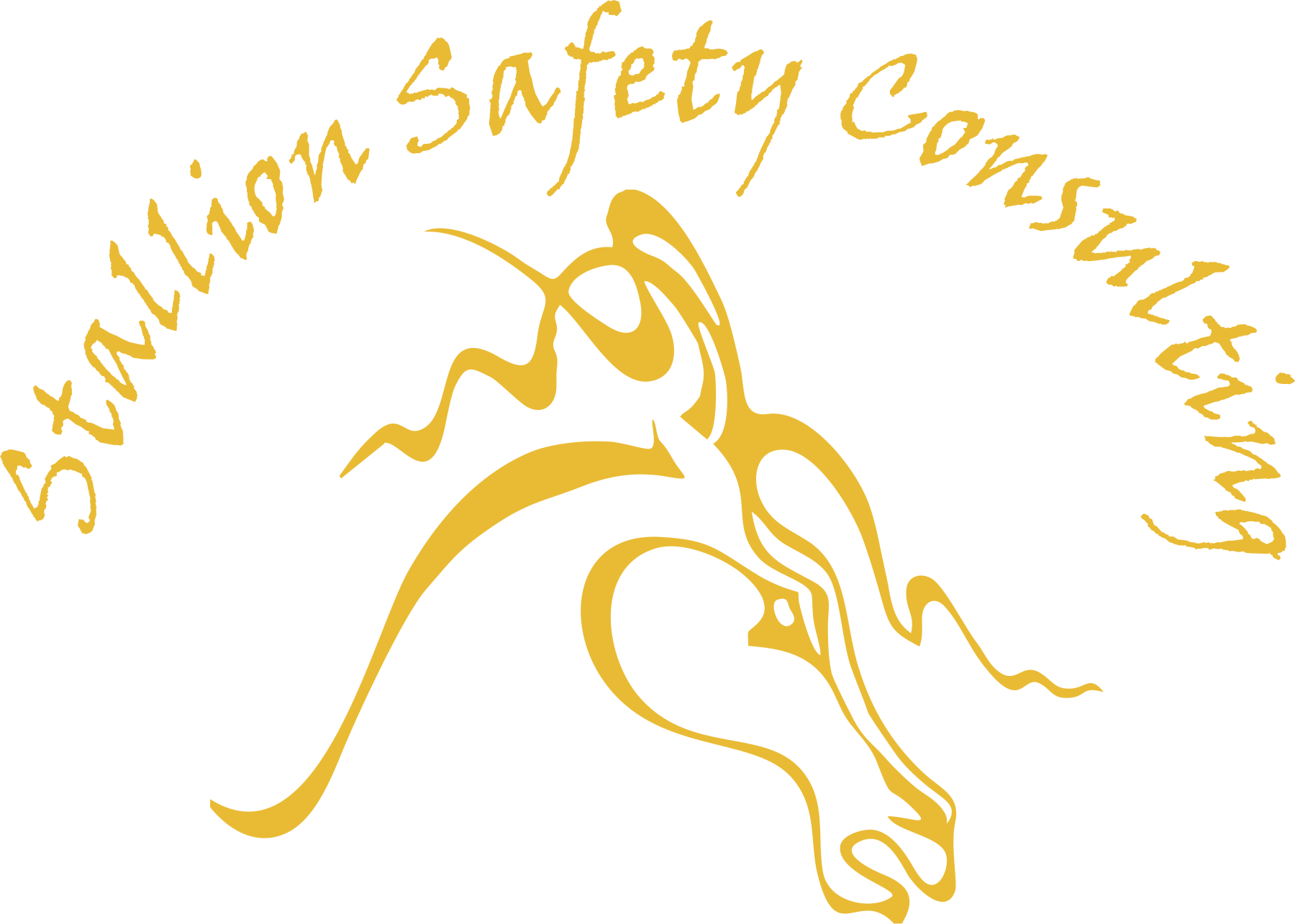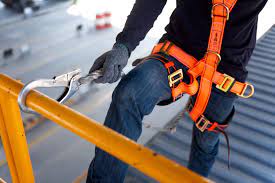|
If you are at risk for falling three meters or more at your workplace, you will wear fall protection equipment.
A complete fall protection program includes training workers, selecting, fitting, and inspecting the equipment.
How do you inspect the webbing (body of belt, harness, or lanyard)?
- · Inspect the entire surface of webbing for damage. Beginning at one end, bend the webbing in an inverted "U." Holding the body side of the belt toward you, grasp the belt with your hands six to eight inches apart.
- · Watch for frayed edges, broken fibers, pulled stitches, cuts or chemical damage. Broken webbing strands generally appear as tufts on the webbing surface.
How do you inspect the buckle?
- · Inspect for loose, distorted, or broken grommets. Do not cut / punch additional holes in waist strap or strength members.
- · Check belt without grommets for torn or elongated holes that could cause the buckle tongue to slip.
- · Inspect the buckle for distortion and sharp edges. The outer and center bars must be straight. Carefully check corners and attachment points of the center bar. They should overlap the buckle frame and move freely back and forth in their sockets. The roller should turn freely on the frame.
- · Check that rivets are tight and cannot be moved. The body side of the rivet base and outside rivet burr should be flat against the material. Make sure the rivets are not bent.
- · Inspect for pitted or cracked rivets that show signs of chemical corrosion.
What should you know about hardware (forged steel snaps, "D" rings)?
- · Inspect hardware for cracks or other defects. Replace the belt if the "D" ring is not at a 90° angle and does not move vertically independent of the body pad or "D" saddle.
- · Inspect tool loops and belt sewing for broken or stretched loops.
- · Check bag rings and knife snaps to see that they are secure and working properly. Check tool loop rivets. Check for thread separation or rotting, both inside and outside the body pad belt.
- · Inspect snaps for hook and eye distortions, cracks, corrosion, or pitted surfaces. The keeper (latch) should be seated into the snap nose without binding and should not be distorted or obstructed. The keeper spring should exert sufficient force to close the keeper firmly.
What should you look for during the safety strap inspection?
- · Inspect for cut fibers or damaged stitches by flexing the strap in an inverted "U." Note cuts, frays or corrosion damage.
- · Check friction buckle for slippage and sharp buckle edges.
- · Replace when tongue buckle holes are excessively worn or elongated.
How do I clean my equipment?
· Wipe off all surface dirt with a sponge dampened in plain water. Rinse the sponge and squeeze it dry. Dip the sponge in a mild solution of water and commercial soap or detergent. Work up a thick lather with a vigorous back and forth motion.
- · Rinse the webbing in clean water.
- · Never force dry or use strong detergents in cleaning.
- · Wipe the belt dry with a clean cloth. Hang freely to dry.
Storage of Fall Protection Equipment
- · Never store the personal fall arrest equipment in the bottom of a tool box, on the ground, or outside exposed to the elements (i.e., sun, rain, snow, etc.).
- · Hang equipment in a cool dry location in a manner that retains its shape.
- · Never store equipment near excessive heat, chemicals, moisture, or sunlight.
- · Never store in an area with exposures to fumes or corrosives elements.
- · Avoid dirt and build-up on equipment.
- · Never use this equipment for any purpose other than personal fall arrest.
- · Once exposed to a fall, remove equipment from service immediately.
|


 CAD
CAD USD
USD